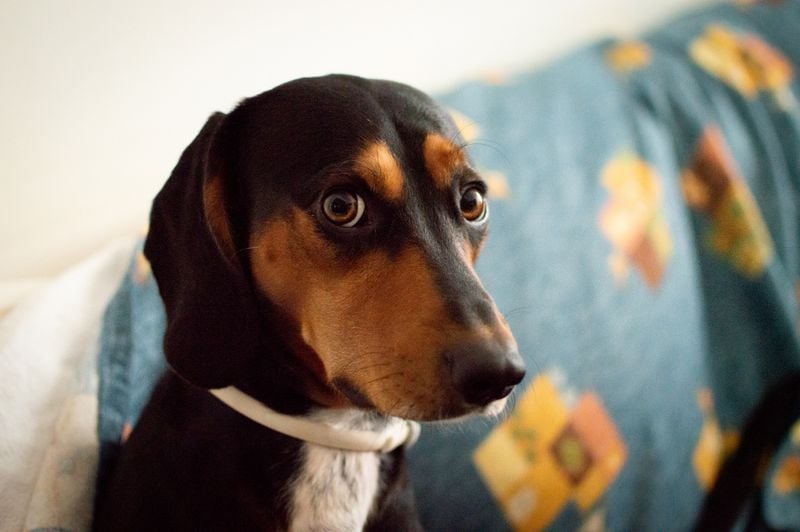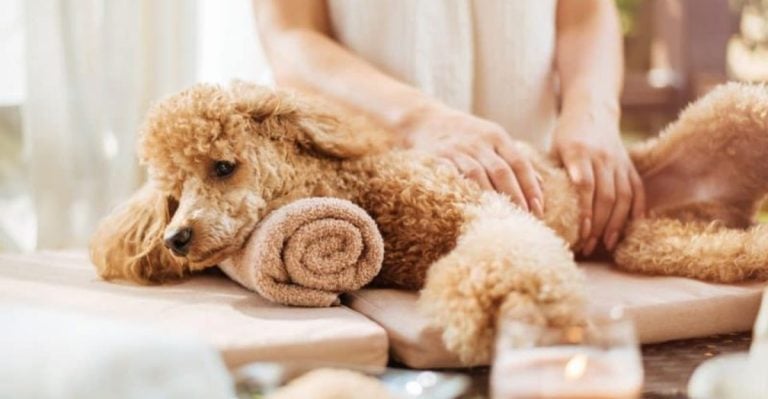If Your Dog Is Scared—Please Don’t Do These 10 Things
When your dog starts acting nervous—whether it’s pacing, panting, trembling, or hiding—it can tug at your heart in the worst way.
You want to help, to reassure, to do something. But the truth is, our natural instincts as humans don’t always translate well into the world of canine anxiety. What seems comforting to us might feel overwhelming or even scary to a dog.
And in your efforts to soothe, you might accidentally make things worse. That’s why understanding what not to do is just as important as knowing how to help.
Dogs experience fear and stress for all kinds of reasons—loud noises, changes in routine, unfamiliar people, or even subtle shifts in their environment.
Some dogs are naturally more sensitive than others, and they rely on their humans to read their cues and respond wisely.
Unfortunately, anxiety in dogs is often misunderstood, and well-meaning owners can unknowingly reinforce the very behaviors they’re trying to fix. There’s no one-size-fits-all solution, but there are definitely some universal mistakes to avoid.
Whether your pup is nervous during thunderstorms, skittish around strangers, or just seems on edge without an obvious trigger, your reaction plays a huge role in how things unfold.
And it starts with staying calm, observant, and informed. So before you rush in with hugs, baby talk, or treats, let’s hit pause and go over the most common missteps dog owners make when their pup is in distress.
You might be surprised by a few—and relieved to learn that small adjustments can make a big difference.
Ready to be the calm in your dog’s emotional storm? Let’s take a look at the 10 things you definitely shouldn’t do when your dog is feeling nervous.
1. Don’t Force Physical Contact
Your dog may look like they need a hug, but that kind of affection could make things worse.
Dogs that are feeling anxious often require personal space more than cuddles. Respecting this boundary can help prevent escalation of their fear or discomfort.
Dogs communicate through body language, and forcing physical contact might send the wrong signals. You wouldn’t want to push a scared puppy into a corner, literally or figuratively.
Instead of diving into hugs, observe and respect their need for space. It’s a balancing act of empathy and patience, showing them they’re safe without overwhelming them.
2. Don’t Yell or Use a Stern Voice
Imagine being in a scary movie, and suddenly someone shouts, “Calm down!” Wouldn’t help much, right?
Dogs, like people, are sensitive to tone. Raising your voice might seem like a way to get your point across, but it often just exacerbates fear.
A loud or stern voice can reinforce the idea that something is amiss, making the dog more uneasy. Dogs are perceptive to human emotions and vocal cues.
Instead, try using soft, reassuring tones. Whispering sweet nothings or singing a gentle tune might sound silly, but it’s a soothing strategy some pet owners swear by. It’s all about creating a calm environment.
3. Don’t Punish the Behavior
Punishing a dog for showing signs of anxiety is like getting angry at thunder for being loud. It’s not only counterproductive but can also damage the trust between you and your pet.
Anxiety often manifests through involuntary actions like shaking, whining, or hiding. These are not deliberate misbehaviors but signals that your dog needs help.
Scolding an already nervous dog will only deepen their fear and make them less likely to come to you in future distress. Patience and understanding are key. Consider offering a favorite toy or treat to create positive associations.
4. Don’t Crowd Their Space
Have you ever felt claustrophobic in a crowded elevator? That’s how your dog might feel when their space is invaded. Even well-meaning closeness can feel like an intrusion to a nervous dog.
If they seek solitude, it’s best to allow them that comfort. Crowding can make them feel trapped and increase their stress.
Creating a safe haven where they can retreat without being disturbed is essential. A cozy corner with familiar smells can offer the refuge they desperately need during anxious moments.
5. Don’t Ignore the Signs
Dogs speak a silent language through their bodies. Ignoring signs like a tucked tail, whale eyes, or trembling can lead to heightened anxiety. Each of these signals is a cry for help.
Overlooking these signs might result in an escalation of their discomfort. It’s like ignoring a flashing red light on your car dashboard!
Paying attention and addressing these signs early can prevent larger issues. Consider consulting a vet for professional advice if the anxiety persists. Your dog’s signals are important, so always lend an attentive ear—or eye, in this case!
6. Don’t Change the Environment Abruptly
Imagine coming home to find your furniture rearranged and unfamiliar faces in your living room. Sudden changes can severely disrupt a nervous dog’s sense of security.
Familiarity is their safe zone. Abrupt environmental changes, such as rearranging furniture or introducing new pets, can amplify stress.
It’s crucial to maintain a stable environment during anxious periods. Gradual introductions and consistency are key. If changes are unavoidable, try to ease your dog into them gently, providing assurance along the way.
7. Don’t Leave Them Alone Too Long
Leaving a nervous dog alone is like leaving a child at a haunted house. Separation can intensify their anxiety, especially if they already feel vulnerable.
Long stretches of solitude might lead to destructive behavior or depression. It’s important to ensure they have company or comfort during such times.
Consider using calming aids or technology like pet cameras to keep an eye on them. This way, they don’t feel completely abandoned, and you can monitor their well-being remotely.
8. Don’t Overstimulate with Noise or Activity
Imagine trying to relax in a bustling train station. For a nervous dog, a noisy or chaotic environment can feel just as overwhelming.
Overstimulation from loud music, a blaring TV, or too many people can heighten their anxiety. It’s essential to create a serene atmosphere where they can feel safe and relaxed.
Consider playing soft, calming music or using white noise. Creating a tranquil space can work wonders for a stressed pup trying to regain their composure.
9. Don’t Rely on Guesswork for Treatment
Would you take random medicine without a prescription? The same caution applies to treating your dog’s anxiety without expert advice.
Guesswork might exacerbate the issue, as what works for one dog might not suit another. It’s essential to identify the underlying causes of anxiety and address them appropriately.
Consult your vet or a trained behaviorist to devise a tailored plan. Professional guidance is invaluable in ensuring the well-being and happiness of your furry friend.
10. Don’t Reinforce the Fear Unintentionally
Repeating “It’s okay” in a worried tone might seem reassuring, but it actually validates the dog’s fear, reinforcing their anxiety.
Dogs are highly attuned to human emotions, and nervousness in your voice can confirm their fears. Acting calm and confident is crucial.
Model the behavior you want to see. Encourage bravery by maintaining a relaxed demeanor, showing them there’s nothing to worry about.
















